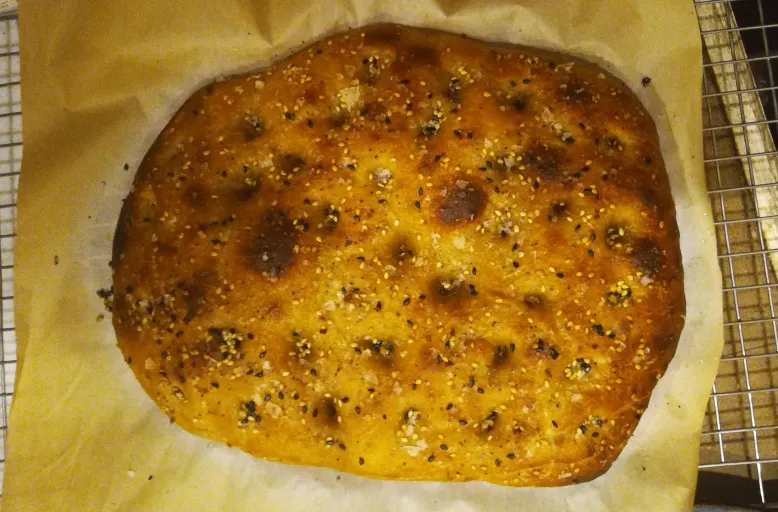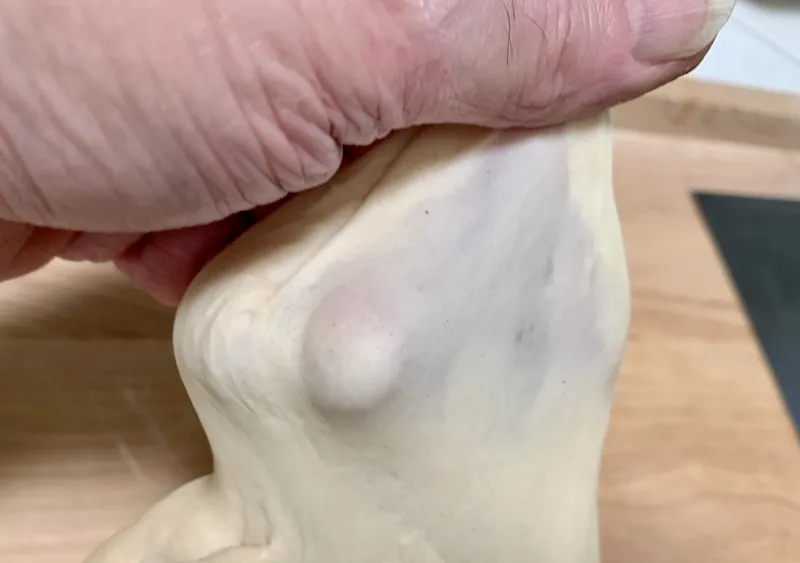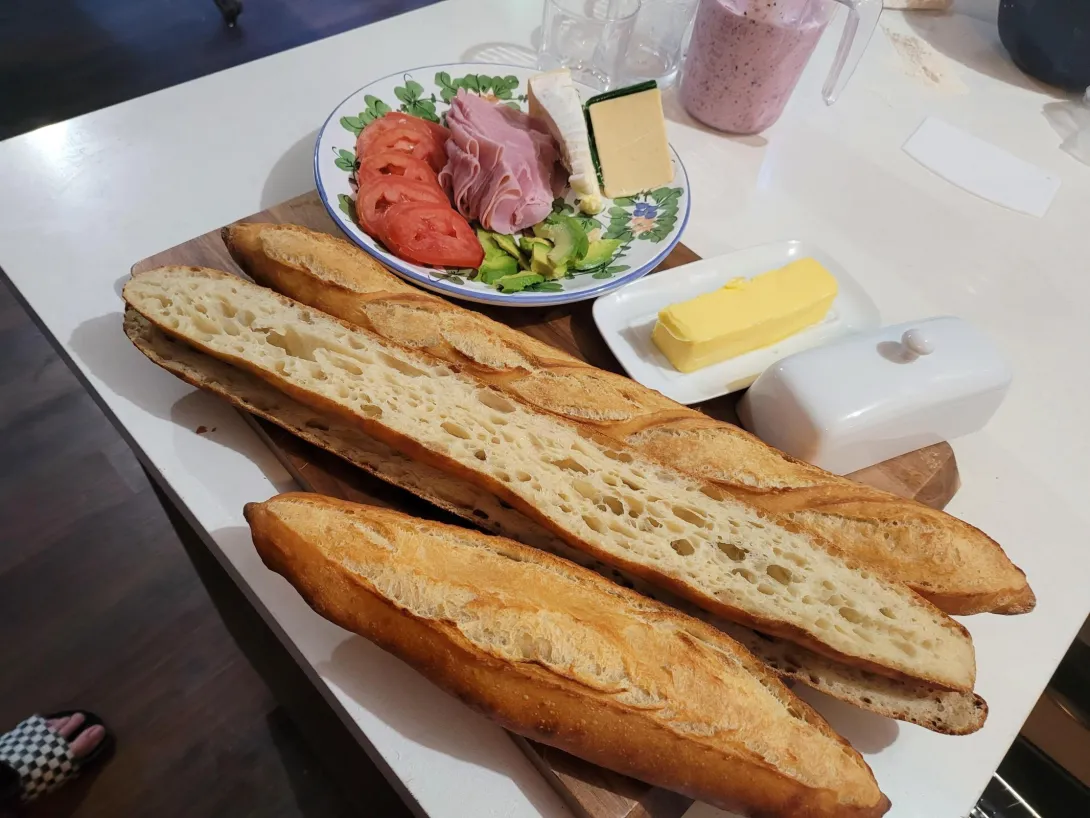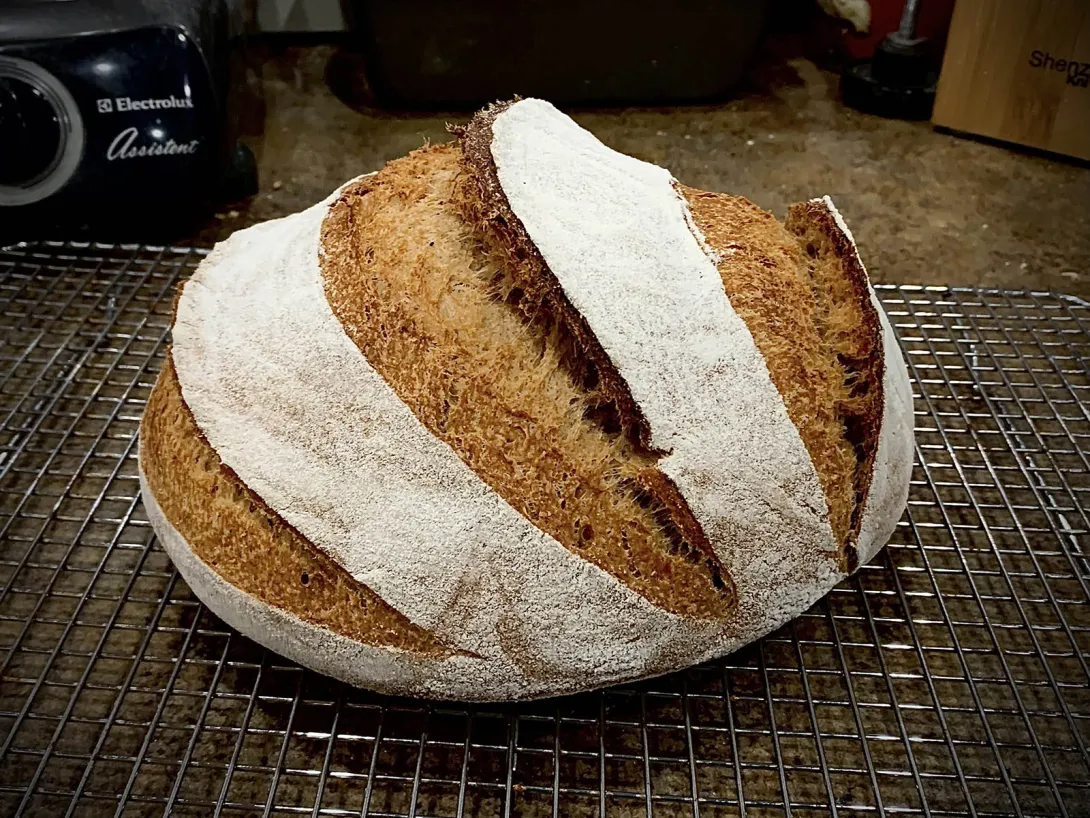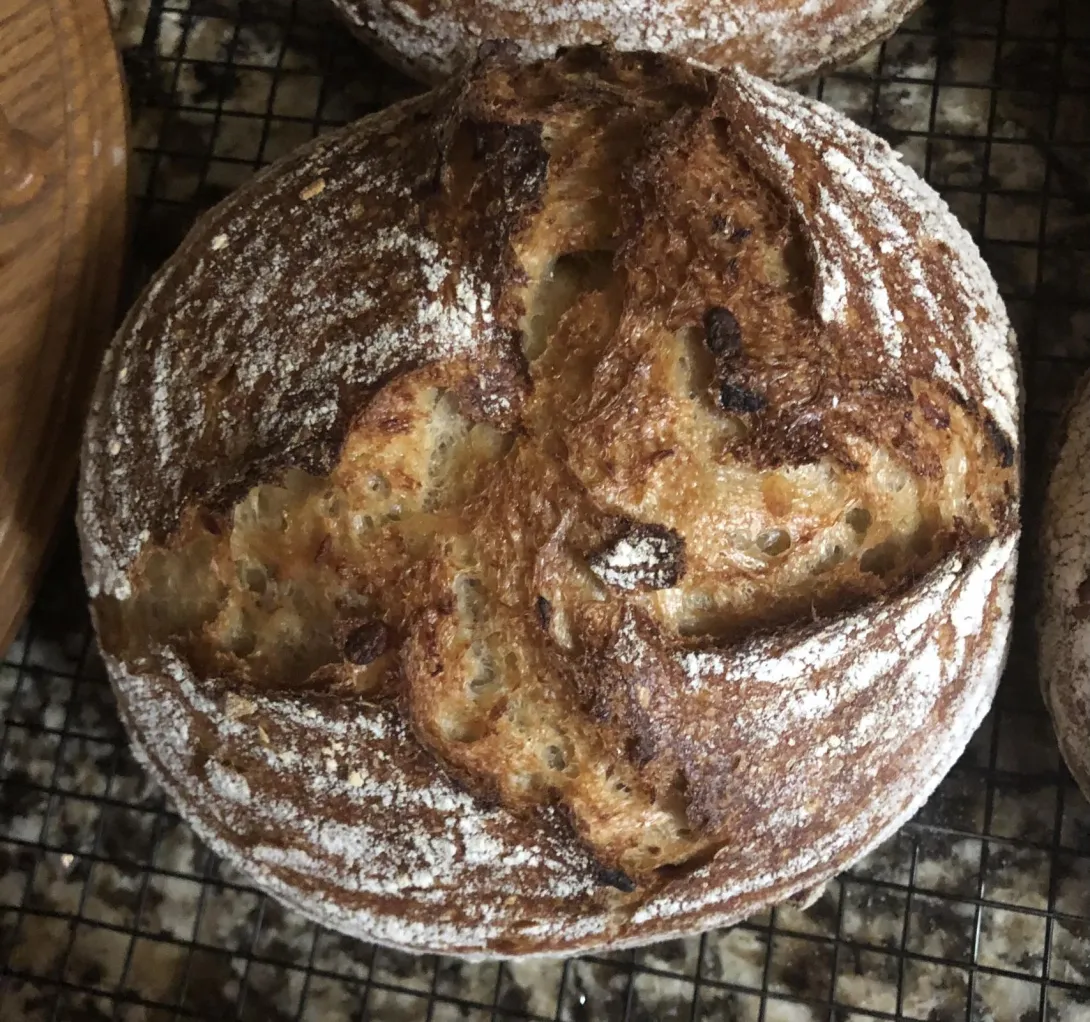Sourdough Pumpernickel/Rye Bread
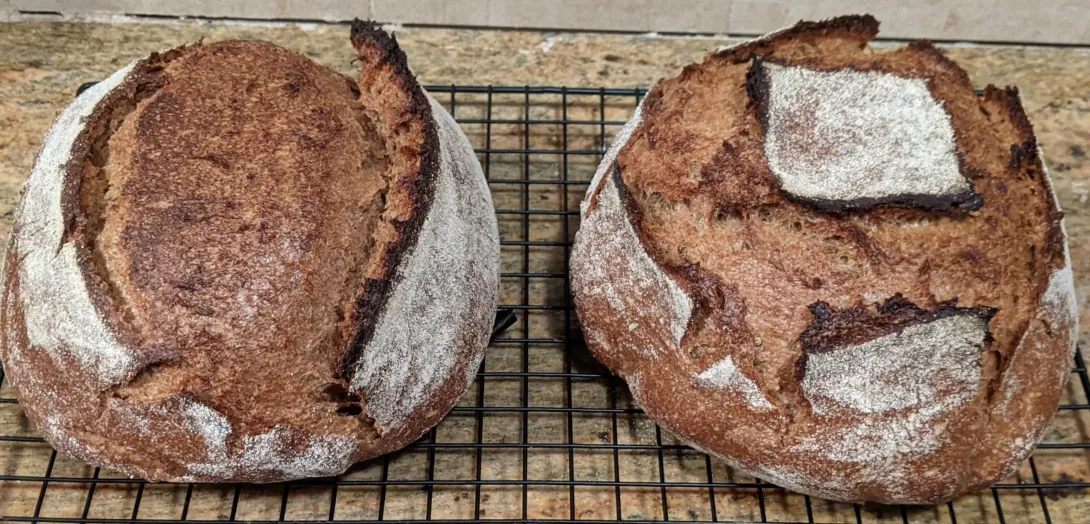
My father requested pumpernickel bread for Thanksgiving sandwiches so I found this Breadtopia recipe to try. Of course I didn't really follow the recipe, but I did do 50% KABF and 50% home milled rye flour, the fennel seeds, molasses, and orange rind. I threw in some beer just because I had an open bottle from a previous bake. I'm not happy with how thick the ear is on the Batard - looks like the bread might be a bit underproofed, but I'm sure it will still be flavorful.
- Log in or register to post comments
- 4 comments
- View post
- ifs201's Blog
